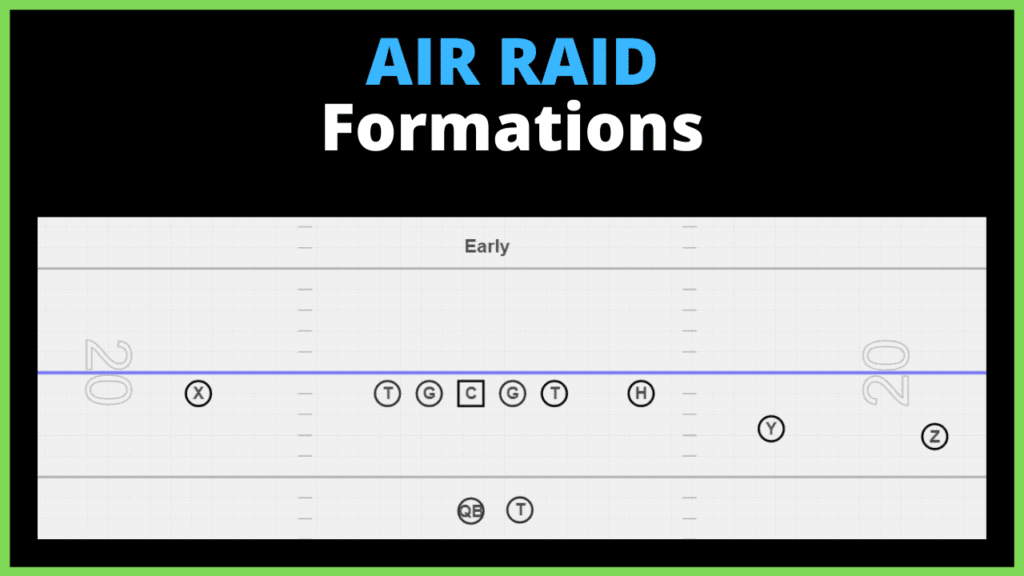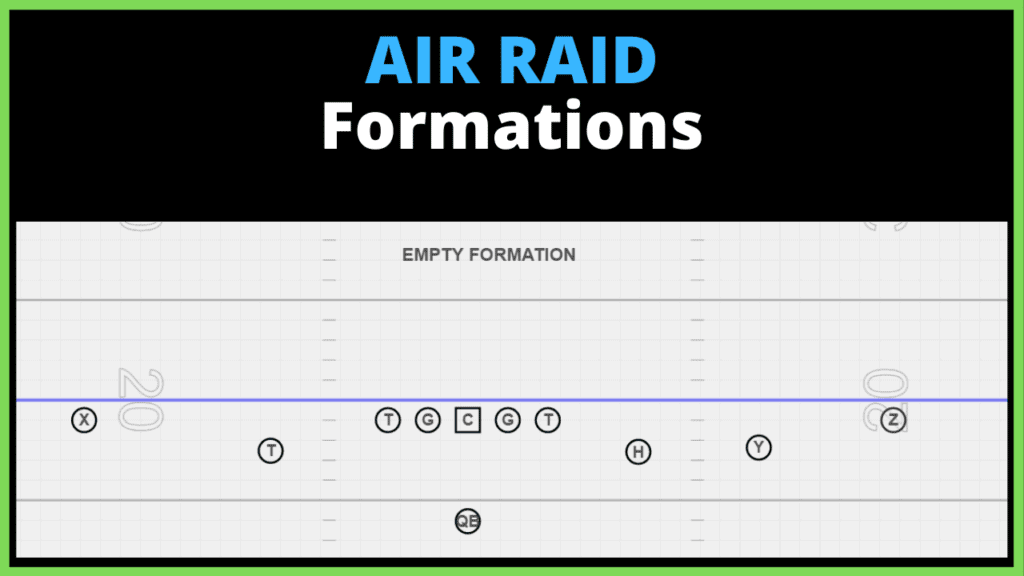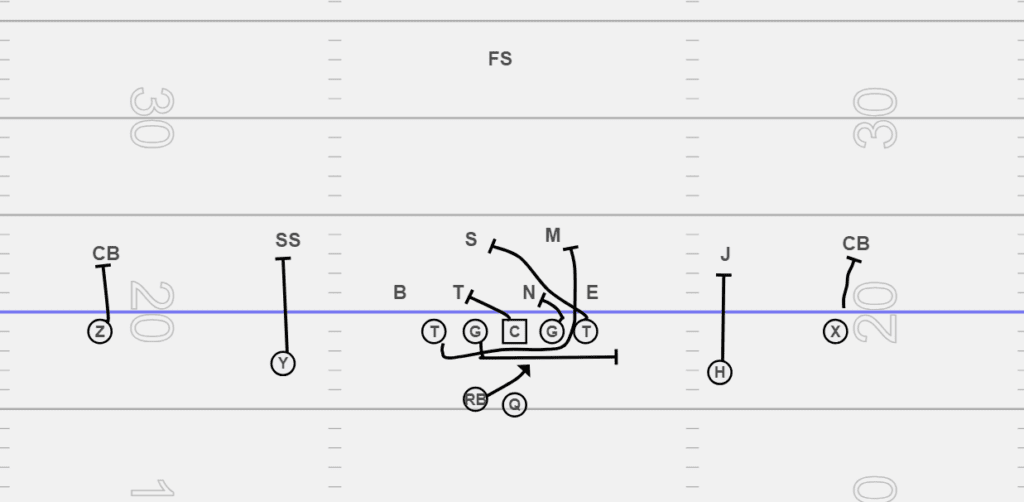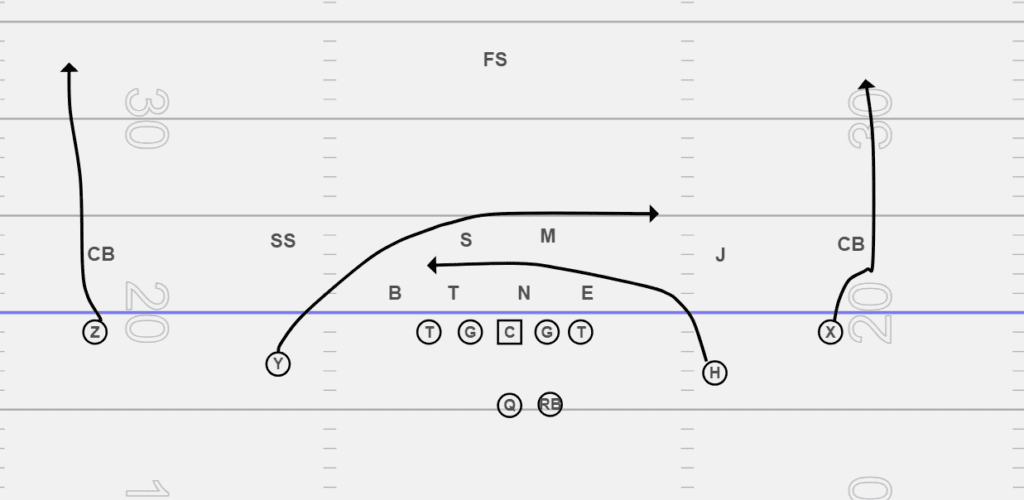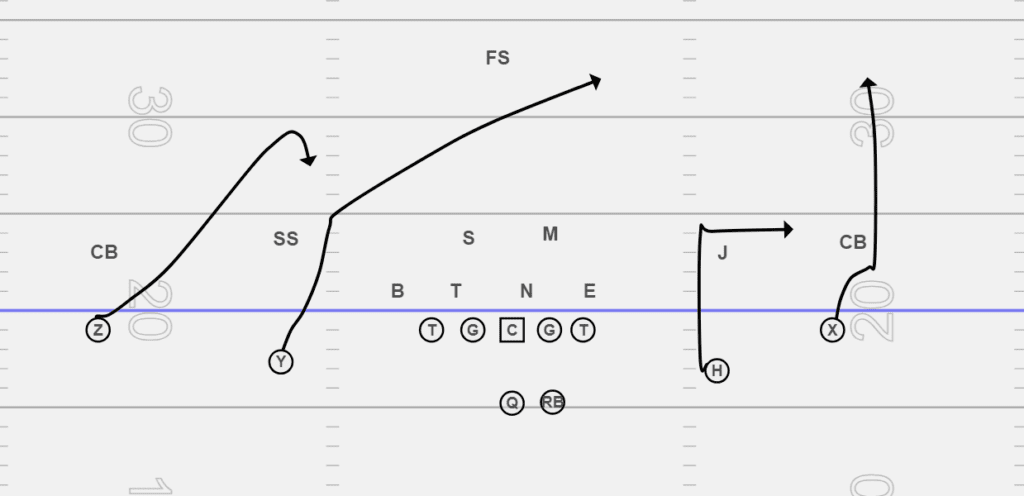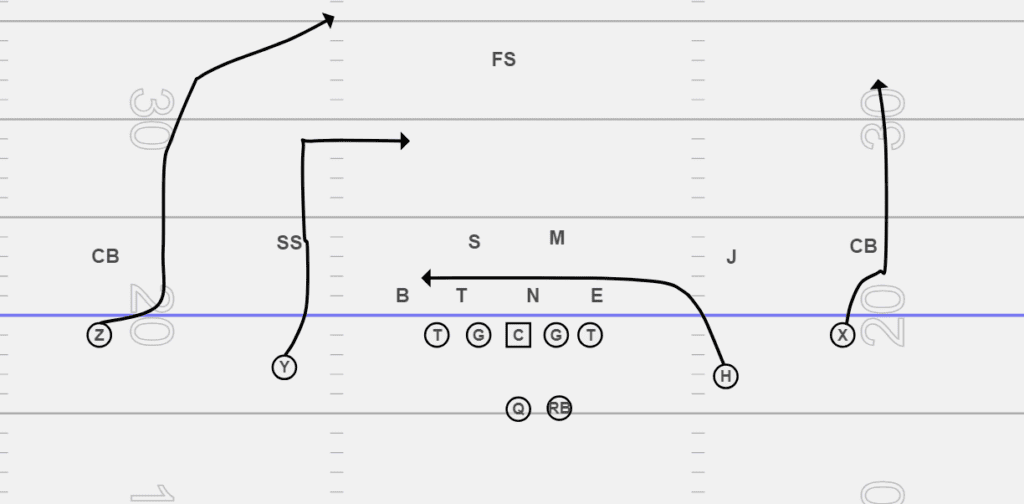The air raid offense is becoming one of the biggest buzzwords in football. The old-school style of ground and pound is slowly fading out, and the air raid is taking over. What is the new style of air raid offense?
The Air Raid offense is a system that focuses primarily on passing plays rather than running plays. Air raid formations have 4-5 receivers on the field at all times.
In this article, we will show you exactly what the Air Raid offense is and how it came to be.
What Is The Air Raid Offense?
The Air Raid offense works by having 4 or 5 wide receivers on the field. The quarterback is responsible for throwing the ball to these receivers.
Coaches have designed route concepts and patterns to take advantage of defenses playing both man and zone coverage.
The offense will run a shotgun formation, with 2 or 3 receivers to one side and 2 receivers to the other side. The whole point of the Air Raid offense is to stretch the field horizontally and vertically, making the defense cover all areas.
Teams that run the Air Raid offense often have superior athletic talent and a smart quarterback who can process reads quickly. Also, teams that run the Air Raid offense tend to score a lot of points quickly, as they often have to catch the football and make only 1 or 2 people miss. Deep throws and crossing patterns are a staple in the Air Raid offense.
The one downside of running the Air Raid offense is the time of possession. Teams that throw the football often score quickly or can’t control the clock. This means the defense is on the field longer and will tire out more quickly.
Who Invented The Air Raid System?
The Air raid offense was started by college football offensive coordinator Mike Leach and head coach Hal Mumme. At both Iowa Wesleyan College and Valdosta State University, these men started to craft this revolutionary offense.
The shortened story goes that they both traveled to Florida for a coaches clinic when they talked to a coach who was running his two-minute offense with a high tempo and high speed. The two coaches looked at each other and asked, “Why can’t we do this full-time?”.
Taking influence from LaVell Edwards at BYU, Leach, and Mumme designed the offense to throw the football 80-85% of the time. This offense put the best athletes on the field and used spacing to get players open. No longer could teams sit in zone coverage, as concepts were implemented to take advantage of it.
Once Leach and Mumme launched the offense at the Division 1 level at Kentucky, the offense has never been the same.
After the first year at Kentucky, the sophomore quarterback started to attract some eyeballs with his arm talent, and the Air Raid offense was born on a mainstream platform.
Mike Leach continued to run the system when he made stops at Washington State, Texas Tech, and Mississippi State.
Learn How To Watch Film Properly…
Uncover your opponent’s offensive and defensive tendencies so you can easily build a game plan.
Inside You’ll Find:
- Strategies to pick apart defenses
- How to identify player weaknesses
- How to save time in your weekly breakdowns
Air Raid Offense Formations
The air raid offense uses a variety of formations. The key to the Air Raid offense is the simplicity of the play calls, formations, and communication system.
The Air raid offense took the spread offense and made it even more flexible.
Offensive coordinators will often tag their plays with one word for simplistic purposes. Below, we’ll cover some of the more popular formations and their common name for them.
Early / Late
The Early and Late formations are a 3×1 set with the inside receiver on the line of scrimmage and the other 2 receivers off the line of scrimmage. Early means the 3 receivers go to the right, and Late means the receivers go to the left.
As simple as it is, the coach must yell out the word early or late, and their entire offense is set in formation.
Empty
One of the more common formations in the Air Raid is the empty formation. Empty means that there is an empty backfield, and 5 receivers are in a position to run routes. With 5 receivers, the defense must account for the entire field.
5 receiver empty sets do limit the amount of run potential. Coaches can design quarterback runs to keep the defense honest, but the coach will pass the football out of empty sets.
Run Plays In The Air Raid Offense
The Air Raid running game is similar to other offensive schemes, it is just more of a pass-heavy offense. This is why air raid quarterbacks will often throw for 3,000 yards per season.
Although it is a pass heavy offense, the offensive line coach must be hard on the offensive line to make sure they can run the ball effectively.
Inside Zone
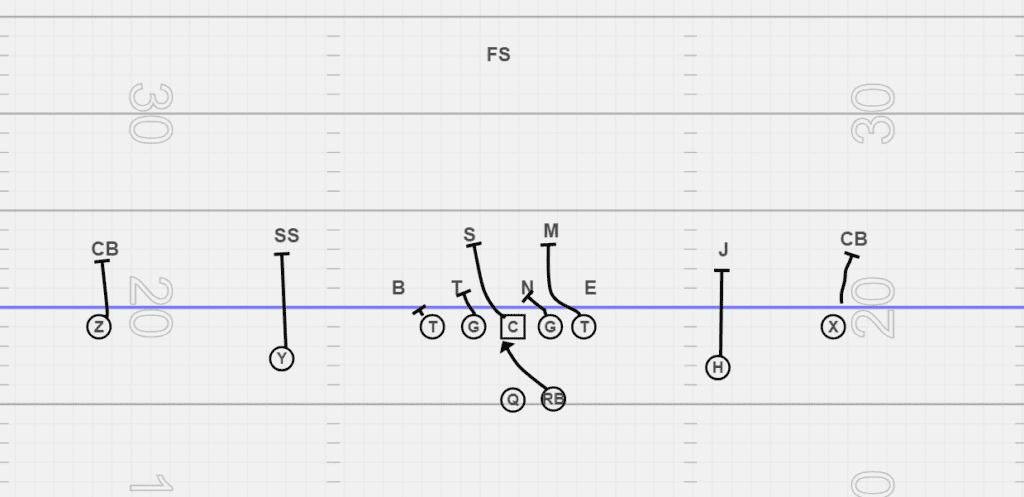
The Air Raid offense does have some run plays, although it’s rare to see true Air Raid teams run the football.
The most common play is the Inside Zone. Inside zone is a simple play that allows the offensive line to displace the defensive lineman vertically and run the ball between the tackles.
This play is often coupled with an RPO to keep a linebacker from committing to the box.
Gap Scheme Runs
The air read scheme uses base gap scheme runs to keep the defense honest. Gap schemes enable spread offenses to have a power running game.
RPOs are also now more common in the Air Raid, as coaches are starting to see more odd fronts and need to hold players outside the box. If you’re an Air Raid team or are thinking about starting the system, we recommend installing counter, power, or outside zone to have an efficient run game.
Popular Pass Plays In The Air Raid Offense
The offensive philosophy in the Air raid offense is to throw the football to intermediate and vertical routes.
The passing offense of the Air Raid takes advantage of both zone coverage and man coverage. The four wide receiver sets force defenses to bring on a nickel package to cover the speedy receivers.
The threat of throwing the football downfield every play has forced defensive coordinators to redesign their scheme.
Teams must hire a great wide receivers coach who can teach route running and separation properly.
Mesh
One of the most recognizable plays in the Air Raid offense is the mesh play. The play gets its name from the two receivers crossing the middle.
They will meet at a “mesh” point (a high five-point). The mesh point is a landmark in the middle of the field where they will almost touch shoulder to shoulder and continue to run across the field.
This play is effective because if the team wants to play man coverage, they must follow a receiver across the field, which they will get naturally “picked” by the other receiver.
The mesh concept is one of the top pass plays in the Air Raid offense because other routes can be added to the concept to beat both man and zone.
Y Cross
Y Cross gets its name because the Y receiver (typically a slot receiver) will cross through the middle of the defense.
This play is effective because it gets a speedy receiver across the field and allows the coach to manipulate the front end of the coverage with other receivers.
A crossing receiver is one of the hardest things for a defense to stop. Coaches have used posts and clear-out routes to eliminate defensive backs from their zones, which they will then fill the void with the cross.
Mills Concept
The Mills play isn’t necessarily a play but a concept that many Air Raid teams will use on the backside of their plays.
The Mills concept is great because it helps beat any two high coverage, such as cover 2 or cover 4.
The two players on the backside of the concept will run a dig roughly 8-10 yards down the field. The X receiver will then run a skinny inside post.
This stresses the cornerback and the safety who need to decide to help on the dig or the backside post. The read is easy for the quarterback, who needs to read the safety. If he goes low, throw the post; if he stays high, throw the dig.
Shallow Cross
The Shallow cross series is another concept that takes advantage of teams that try to play 2-high safeties against the Air Raid Offense. The offense’s goal is to ensure safety, and the outside backer chooses wrong.
The Y receiver will run a dig concept, and the underneath receiver will run a shallow cross. The linebacker on defense needs to decide if they should attack the shallow cross or deepen up and play the dig behind them.
This concept is often paired with the Mills concept, which stresses the defense to cover the entire width as well as the length of the field for the deep post.
Keep Learning
NFL teams as well as college coaches have adopted most Air Raid concepts. By running multiple pass concepts, the defensive line is forced to rush the passer 50 times a game. This means they will tire out faster and it forces the opposing team to use more defensive linemen.
The Air Raid system has completely revolutionized how the game is played. Teams are now throwing the football 40-50 times a game in hopes of big-play opportunities. The old school ground and pound slowly is fading out, and the new backyard game is taking over.
Defenses now have to worry about tackling in the open field rather than spilling offensive linemen or attempting to redirect running backs. Athletes are harder to cover in space, and the Air Raid offense takes advantage of that.
Let’s keep learning! Our learning center is packed with information regarding techniques, schemes, and more!
If you’re looking for more in-depth breakdowns & coaching resources, visit our coaching resource page here.
If you run any other versions of the plays listed above, we’d love to hear it. Tweet us @vIQtorysports and let us know!


